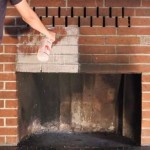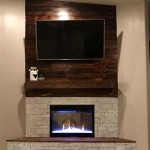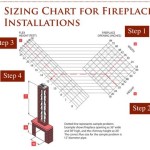Fireplace Room Heaters: An In-Depth Look at Functionality, Types, and Safety
Fireplace room heaters represent a popular heating solution for supplementing central heating systems or providing localized warmth in specific areas. These appliances combine the aesthetic appeal of a traditional fireplace with the functional heating capabilities of modern technology. Understanding the various types, operational characteristics, and safety considerations associated with fireplace room heaters is crucial for making informed purchasing decisions and ensuring safe and efficient operation.
The term "fireplace room heater" broadly encompasses several distinct categories of heating devices, each utilizing different energy sources and heating mechanisms. Categorizing these heaters based on their fuel source provides a clearer understanding of their inherent characteristics and operational requirements. Common types include electric fireplace heaters, gas fireplace heaters, and ethanol fireplace heaters. Each type offers unique advantages and disadvantages concerning heating efficiency, installation requirements, and environmental impact.
Understanding Electric Fireplace Heaters
Electric fireplace heaters are among the most versatile and widely used types of fireplace room heaters. These units operate by converting electrical energy into heat, typically using resistance heating elements. A significant advantage of electric fireplace heaters is their ease of installation. They generally require only a standard electrical outlet, eliminating the need for complex venting or gas line connections. This makes them suitable for a wide range of rooms and living spaces, including apartments, condos, and houses without existing fireplace infrastructure.
The aesthetic appeal of electric fireplace heaters is enhanced by realistic flame effects. These effects are commonly achieved using LED lighting and rotating mirrors to simulate the appearance of a natural fire. While the flame effect does not contribute to the heating output, it provides a visual ambiance that mimics the traditional fireplace experience. Many models offer adjustable flame intensity and color options, allowing customization to suit individual preferences.
Electric fireplace heaters typically incorporate a thermostat for temperature control. This allows users to set a desired room temperature, and the heater will automatically cycle on and off to maintain that temperature. This feature contributes to energy efficiency and prevents overheating. Some models also include a timer function, which allows the heater to be programmed to operate for specific periods, such as during sleeping hours or while away from home. This further enhances energy conservation and operational convenience.
Safety features are paramount in electric fireplace heater design. Many models are equipped with overheat protection mechanisms that automatically shut off the heater if it reaches an unsafe temperature. This prevents the risk of fire or damage to the unit. Additionally, some electric fireplace heaters incorporate tip-over sensors, which automatically disable the heater if it is accidentally knocked over. These safety features provide an added layer of protection, particularly in households with children or pets.
While electric fireplace heaters offer convenience and aesthetic appeal, their heating efficiency may be lower compared to gas fireplace heaters. The cost of electricity can also be a factor, depending on local utility rates and usage patterns. Nonetheless, electric fireplace heaters remain a popular choice due to their ease of installation, safety features, and the visual ambiance they provide.
Exploring Gas Fireplace Heaters
Gas fireplace heaters utilize natural gas or propane as their fuel source. They offer a more authentic fireplace experience compared to electric models, as they produce real flames and generate radiant heat. Gas fireplace heaters typically require professional installation due to the need for gas line connections and venting systems. This ensures safe and proper operation and compliance with local building codes.
The heating efficiency of gas fireplace heaters is generally higher than that of electric models. They produce more heat per unit of energy consumed, making them a cost-effective heating solution in areas with relatively low gas prices. The radiant heat emitted by gas fireplace heaters provides direct warmth, creating a comfortable and cozy environment. Some models feature adjustable heat output, allowing users to control the intensity of the heat based on their needs.
Gas fireplace heaters are available in various styles and designs, including traditional fireplaces, fireplace inserts, and freestanding stoves. Fireplace inserts are designed to fit into existing fireplace openings, providing a convenient way to upgrade an existing fireplace. Freestanding stoves offer greater flexibility in placement, as they do not require an existing fireplace. The aesthetic options available for gas fireplace heaters are extensive, ranging from classic brick designs to modern, sleek styles.
Safety considerations are crucial for gas fireplace heaters. Proper ventilation is essential to prevent the buildup of carbon monoxide, a colorless and odorless gas that can be fatal. All gas fireplace heaters should be installed with a carbon monoxide detector to provide an early warning in case of a leak. Regular maintenance, including inspection of the venting system and gas line connections, is necessary to ensure safe and efficient operation.
The initial cost of installing a gas fireplace heater can be higher than that of an electric model due to the professional installation requirements. However, the higher heating efficiency and realistic flame appearance make them a popular choice for homeowners seeking a more authentic fireplace experience. It is important to consider local gas prices and installation costs when evaluating the overall cost-effectiveness of a gas fireplace heater.
Analyzing Ethanol Fireplace Heaters
Ethanol fireplace heaters represent a relatively newer type of fireplace room heater. These units utilize bio-ethanol fuel, a renewable energy source derived from plant-based materials. Ethanol fireplaces are ventless, meaning they do not require a chimney or external venting system. This makes them suitable for a wide range of spaces, including apartments, condos, and rooms where installing a traditional fireplace is not feasible.
The aesthetic appeal of ethanol fireplaces is often characterized by their modern and minimalist designs. They create a clean-burning flame that produces a warm and inviting ambiance. The flame is typically visible from multiple angles, enhancing the visual impact. Ethanol fireplaces are available in various styles, including wall-mounted units, tabletop models, and freestanding designs, offering flexibility in placement and decor integration.
Ethanol fireplaces produce relatively low heat output compared to electric or gas models. They are primarily intended for providing supplemental heating and aesthetic ambiance rather than serving as a primary heating source. The heat generated by an ethanol fireplace is typically sufficient to warm a small room or area. The fuel consumption rate varies depending on the size of the burner and the flame intensity.
Safety precautions are essential when using ethanol fireplaces. It is crucial to use only approved bio-ethanol fuel and to follow the manufacturer's instructions carefully. Never refill the fuel tank while the fireplace is burning or still hot, as this can create a fire hazard. Ensure that the fireplace is placed on a stable and non-flammable surface, away from flammable materials such as curtains or furniture. Adequate ventilation is also important, although ethanol fireplaces are ventless, fresh air circulation is necessary to prevent the buildup of fumes.
The cost of bio-ethanol fuel can be a factor to consider. The price per gallon can vary depending on the supplier and the quality of the fuel. It is important to purchase fuel from reputable sources to ensure that it meets safety standards and burns cleanly. Despite the relatively low heat output and fuel costs, ethanol fireplaces offer a unique combination of modern aesthetics, ease of installation, and ventless operation, making them a popular choice for those seeking a stylish and environmentally friendly heating solution.
Various factors influence the selection of an appropriate fireplace room heater. The size of the room to be heated, the desired aesthetic, the availability of fuel sources (electricity, gas, or ethanol), and budgetary constraints are all important considerations. Understanding the characteristics of each type of fireplace room heater allows for a more informed decision-making process, ultimately leading to a heating solution that meets both functional and aesthetic requirements.

Freestanding Electric Stoves Buyer S Guide Fireplaces Direct

Electric Fireplace Heater Are They Effective Types And Specs

Indoor Electric Fireplaces Heaters Real Flame

Electric Fireplace Heater Freestanding 1400w Compact Stove W Realistic Flame Effect Adjustable Temperature Portable Indoor Space Overheat Protection For Home Office Ca

S Best Space Heaters With Thousands Of Perfect Ratings Start At 25 Thestreet

Turbro Suburbs Ts25 Electric Fireplace Infrared Space Heater With Adjustable Flame Effects Timer Remote Control 707 98 125a The Home Depot

Small Air Heater Electric Fireplace Space Log 3d Flame Stove Lightweight

Birdeem Space Heater Heaters For Indoor Use European Style Fireplace Fan Home Living Room Bedroom Flame Stove Small Desktop Hot Ca

Lifeplus Electric Fireplace Stove 27 In Freestanding Heater With Adjustable 3d Flame Effect Overheating Protection Oshs1e0113 Sfp203c The Home Depot

Rolling Electric Fireplace Mantel Infrared Quartz Heater Adjustable Led Flame
Related Posts








